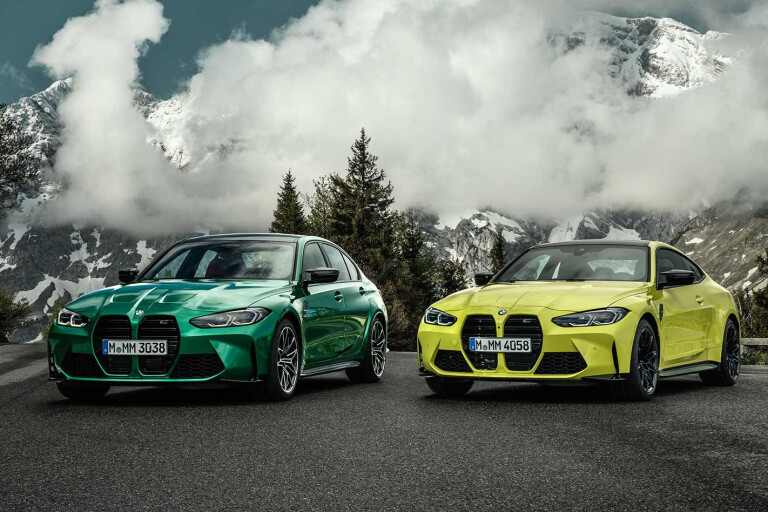
Say hello to the 2021 BMW M3 and M4 and, yes, that grille is real. M Division's latest weapons debut a very different look to their predecessors as BMW seeks to steal market share from the likes of Mercedes-AMG, Audi and Alfa Romeo.
The large vertical openings replace the famous kidney grille and feed air to a revised version of the S58 3.0-litre turbocharged straight-six that debuted in the X3 M and X4M producing up to 375kW and 650Nm for a 0-100km/h sprint of 3.9sec. And that's as a rear-driver.
UPDATE: The BMW M3 and M4 will be available in both manual and automatic guises in Australia in Q1 2021 starting from $144,900 for a base M3 in rear-drive, manual. The M4 is another $5000 on top of that, though Competition variants for each are $154,900 for M3 Competition and again at $5000 more, it's $159,900 for a new BMW M4 Competition. More details for option pricing towards end of story.
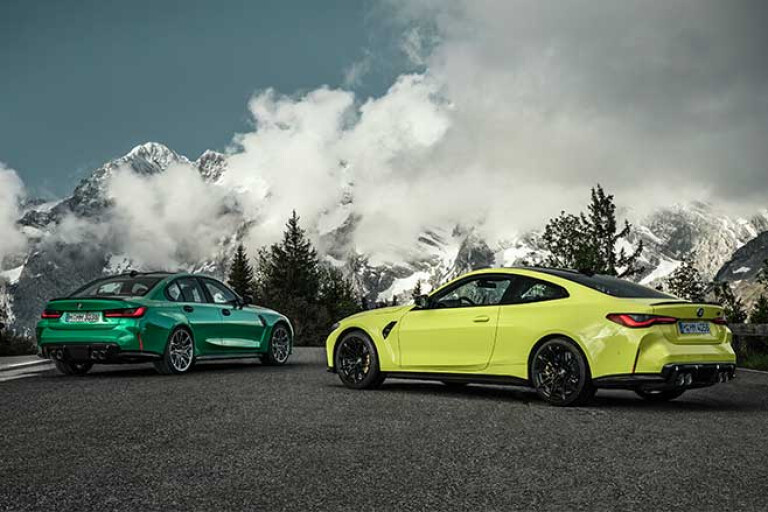
The G80-series introduces a number of firsts for Munich's mid-size mauler: it's the first time a torque converter auto has been offered, a ZF eight-speed replacing the previous seven-speed dual-clutch; all-wheel drive will be an option for the first time ever and a G81 M3 Touring joins the more traditional G80 sedan, G82 M4 and G83 M4 Convertible.
But fear not, traditionalists, because a six-speed manual remains, as does rear-wheel drive, but the more powerful all-wheel drive Competition models will blow all previous generations out of the water as the fastest M3/M4s yet.
The Styling

Let's get the elephant in the room out of the way first: that styling. Initially, the Hannibal-esque front was believed to be fitted to the M4 only with the M3 retaining its more conservative, traditional front end, but both cars receive the controversial face.
M boss Markus Flasch staunchly defends the decision, telling media: "If you see the car without any camouflage in its natural surrounding, I think it was the right move. It suits the car, it's beneficial for cooling intake, I wouldn't change it if I could. I haven't received any negative comments anyway." Clearly, Mr Flasch doesn't frequent social media.
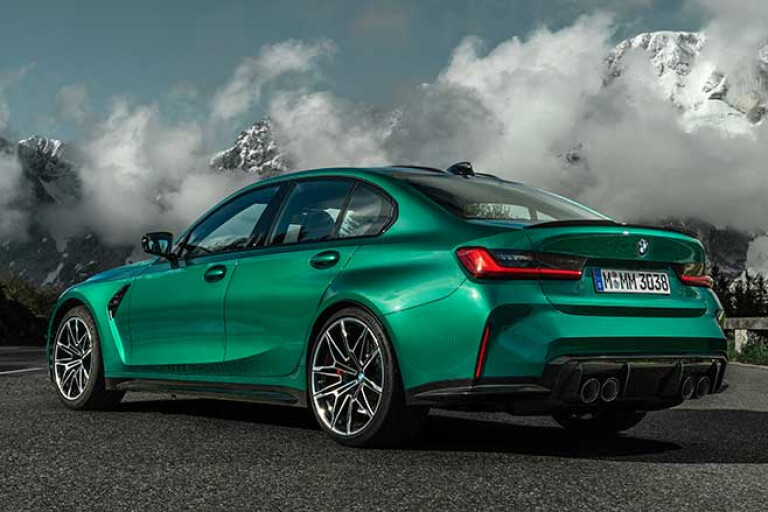
Nevertheless, blacked out and backed by the swollen guards and rippled bodywork of these M variants the nose doesn't dominate like it does on the standard 4 Series. At 4794mm long the M3 and M4 are 123mm longer than their predecessors with an extra 45mm in the wheelbase.
The M3 has grown 26mm wider and 9mm taller, while the M4 increases the same dimensions by 17mm and 10mm respectively. Rear track grows by just 1mm but the front swells by a substantial 38mm to further improve the car's already class-leading front-end response.
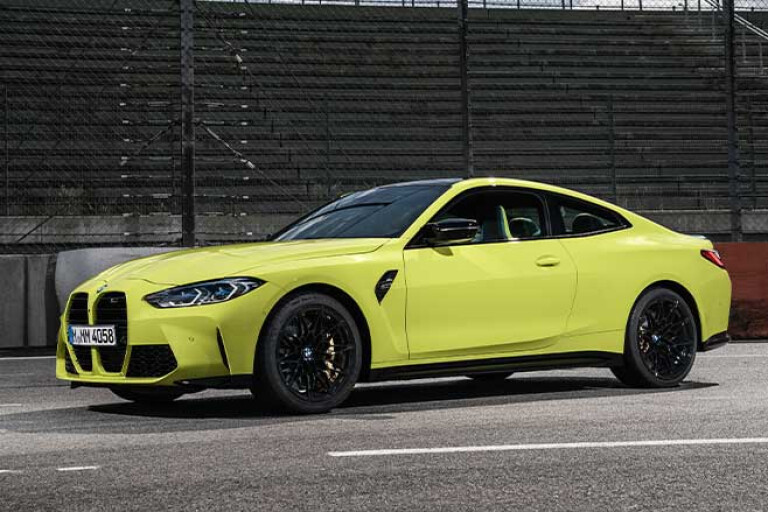
Competition models use black badging, spoiler and tailpipes while a carbon fibre exterior package is also available. Eight regular colours will be offered - Alpine White, Sao Paulo Yellow, Toronto Red, Sapphire Black, Isle of Man Green, Skyscraper Grey, Brooklyn Grey and Portimao Blue - but plenty more are available through BMW Individual.
The Engine
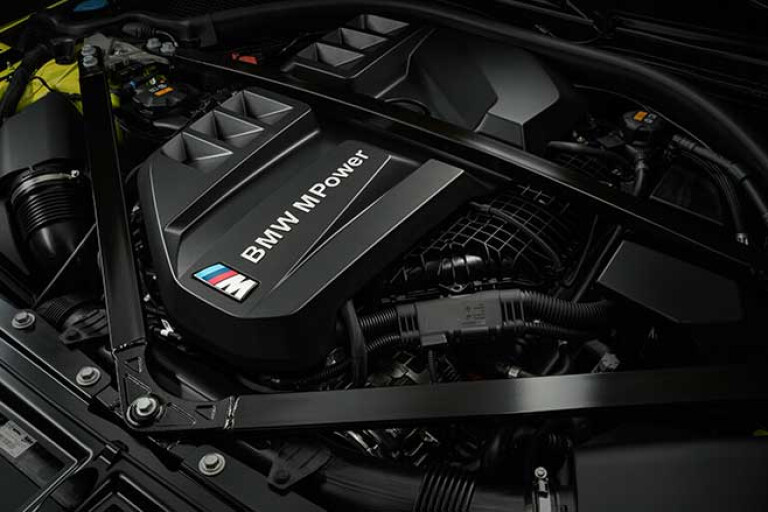
BMW’s new ‘S58’ 3.0-litre twin-turbo straight-six made its debut in 2019 in the X3 M and X4 M performance SUVs but the new M3 and M4 receive the first evolution of this engine, primarily focused on improving throttle response.
Two tunes will be offered depending on the transmission fitted. Six-speed manual variants produce 353kW at 6250rpm and 550Nm from 2650-6130rpm, the latter being the ceiling for the manual 'box carried over from the previous generation.
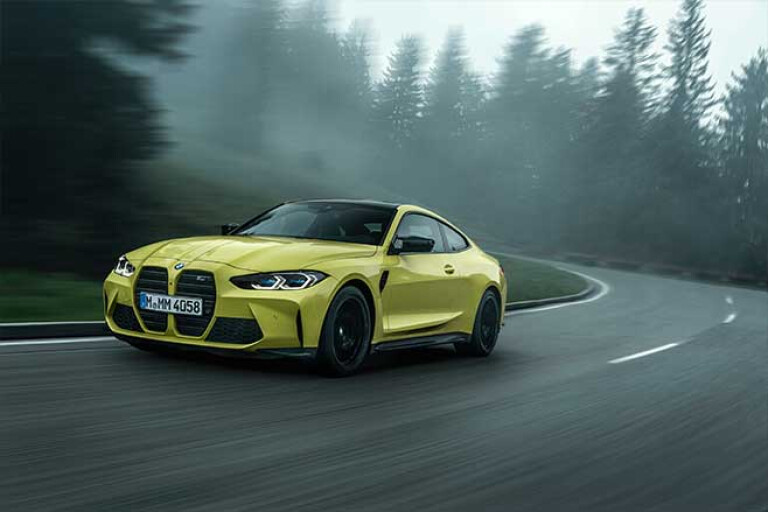
For Competition variants fitted with the eight-speed automatic outputs increase to 375kW at 6250rpm and a whopping 650Nm from 2750-5500rpm, which cuts the claimed 0-100km/h time from 4.2sec to 3.9sec and fuel consumption from 10.8L/100km to 10.2L/100km. Both models are electronically limited to 250km/h as standard or 290km/h when optioned with M Drive Professional.
The true worth of the Competition's more potent tune becomes evident at higher speeds. It's 1.2sec quicker to 200km/h (12.5sec vs 13.7sec) and blitzes its manual counterpart for in-gear thrust. Accelerating from 80-120km/h in the manual takes 4.1sec in fourth gear and 5.6sec in fifth, whereas the automatic slashes these figures to 2.6sec and 3.4sec respectively.

All-wheel drive will be available on Competition variants from H2 2021. No performance figures have yet been announced, but expect a 3.5sec sprint to 100km/h thanks to its superior traction off the line.
The engine is compliant with the latest emissions regulations and will remain so under the tough new EU7 limits to be introduced in 2026, yet Flasch says: "I can promise that this engine is not at the end of its power limit yet."
Drivetrain
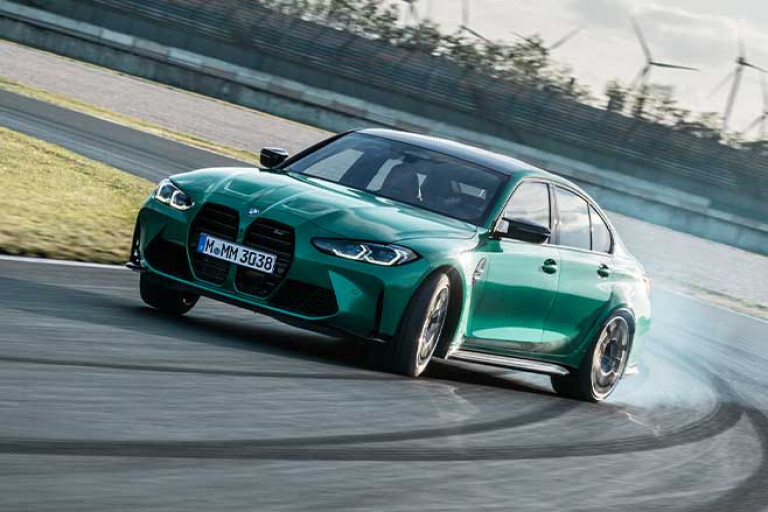
At launch only rear-wheel drive will be available, but all-wheel drive will join the range for the first time. The oily bits are a straight lift from the likes of the M5 and M8, Flasch telling MOTOR "There was no reason for us to change anthing in the hardware, the system is perfect and the benchmark in the high performance segment."
All models use an electronically-controlled rear limited-slip differential, while all-wheel drive variants use a similarly clever multi-plate clutch in the central transfer case. Under normal conditions all the power is sent to the rear wheels but sent forward when slip is detected.
Slip control is now governed by the engine ECU to allow for much faster reaction to traction loss, the transfer case able to cancel out small differences in rotational speed between the front and rear axles without troubling the primary ECU.
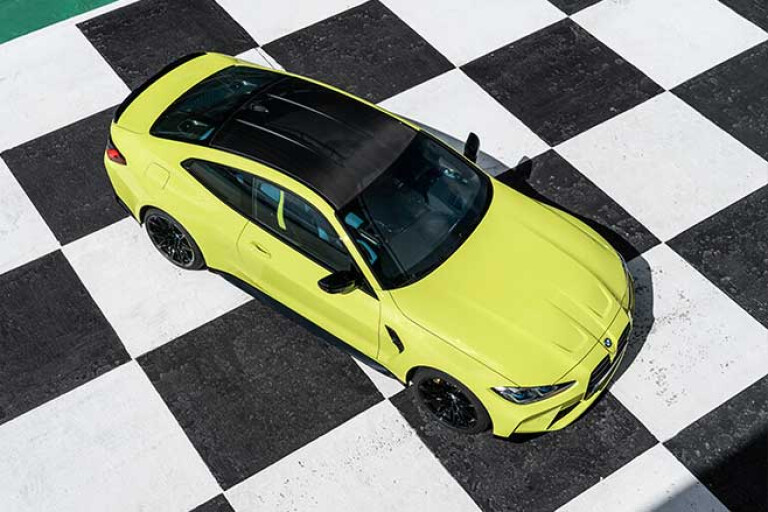
Three modes are available, the traction-oriented 4WD, rear-biased 4WD Sport and tyre-torturing 2WD which Flasch admits is "purely for entertainment". The latest M3 and M4 even have a built in 'drift coach' which records the time, angle and distance of your drifts and offers feedback on how to improve. For those who prefer to go fast, a new 10-stage traction control system offers a level of leniency even beyond the MDM DSC mode.
The manual is essentially a carryover unit from the previous generation, albeit with a revised clutch housing and the inclusion of Gearshift Assistant which automatically matches revs on downshifts, and saves 25kg over the automatic.

A torque converter automatic is a first for an M3, but Flasch says "There were not many reasons left to stay with the seven-speed dual-clutch. There are more advantages than disadvantages and on the weight side there is no disadvantage of the auto."
The torque converter locks up the moment the car pulls away, the 'box will not automatically upshift in manual mode and holding the downshift paddle will skip straight to the lowest available gear for maximum acceleration.
Chassis
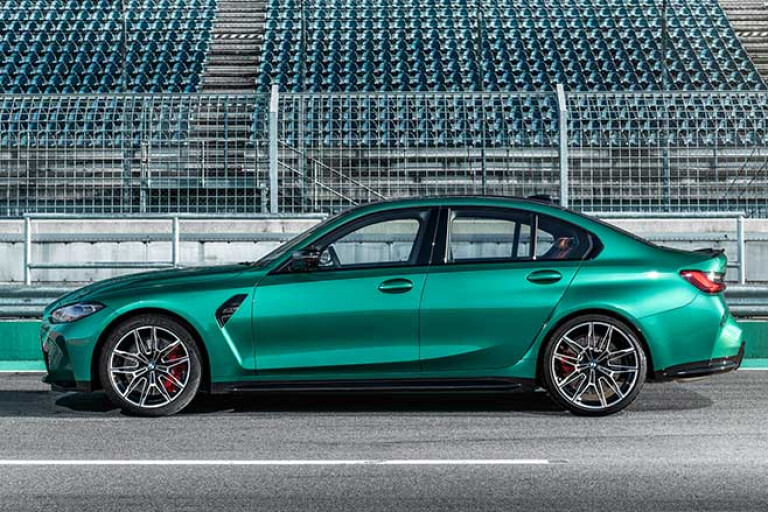
Now for some bad news. The new M3 and M4 are substantially heavier than their predecessors, increasing by between 160-200kg depending on the model and the addition of all-wheel drive will only lift this further.
Flasch points to the increase in size of the base models as the reason, explaining the new M4 is approaching the size of the old M6, while the increased size and performance also necessitates bigger brakes, wheel and tyres to retain control.
M Division no longer offers inadequate braking systems, the new M3 and M4 using 380mm discs and six-piston calipers at the front and 370mm with single-piston calipers at the rear, while the option carbon-ceramics lift rotor sizes to 400mm and 380mm front and rear respectively.
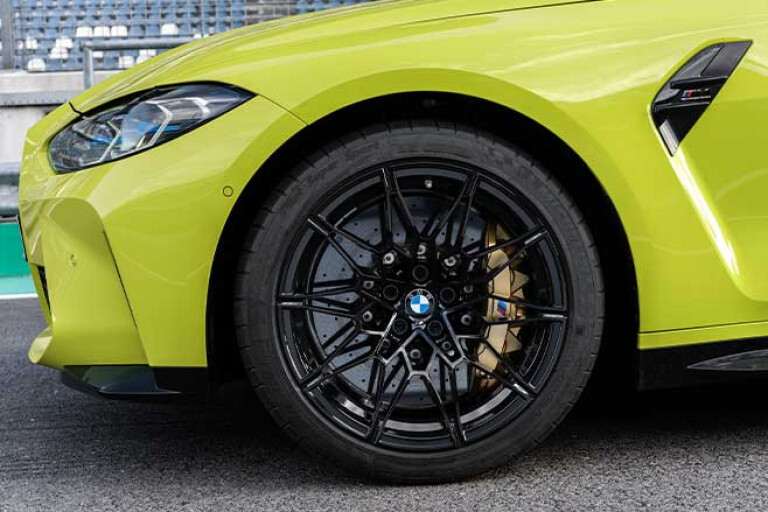
The M8's brake-by-wire system makes another appearance, providing drivers the choice Comfort or Sport braking, along with two settings for the steering and three for the adaptive dampers.
Staggered rims appear for the first time on the standard models, measuring 18 x 9.5-inch front and 19 x 9.5-inch rear, the Competition variants adding an extra inch of diameter, while tyre widths increase to 275mm for the turning and 285mm for the burning.
Another contributing factor to the latest M3 and M4's weight gain is the extraordinary amount of bracing M Division adds, includes lateral, longitudinal and vertical engine bay bracing and further underfloor bracing at the centre and rear of the car.
Interior
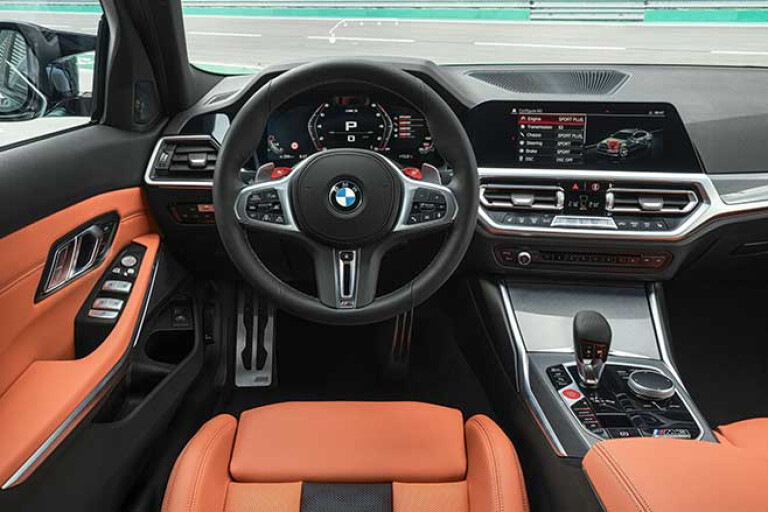
Inside BMW's latest offerings feature every technological trick it has to offer. The aforementioned Drift Analyser measures your skids, the M Laptimer times your laps and displays data on the HUD and the Drive Recorder can capture up to 40sec of driving footage from the driver assistance cameras.
There's a 12.3-inch digital instrument display and 10.25-inch central infotainment display using BMW Operating System 7 that can be updated remotely, all manner of driver assistance systems that can be controlled using the M Mode button, Wi-Fi interface, inbuilt SIM card, 4G connectivity and much more.
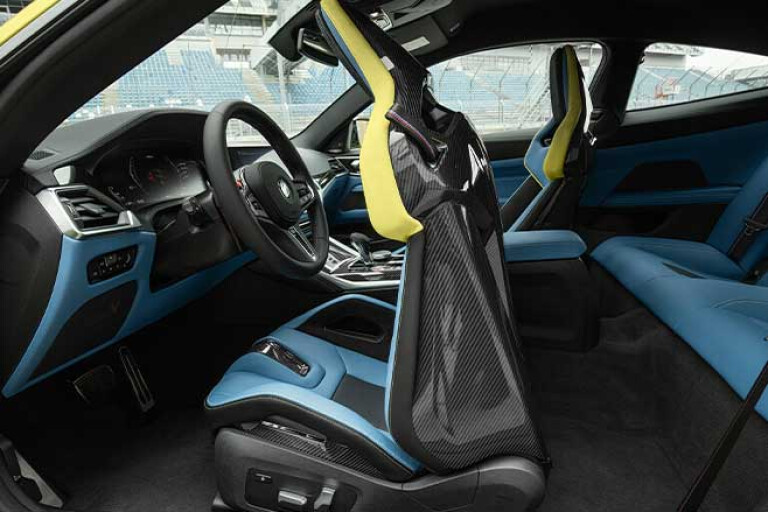
If you're a track junkie, optional carbon bucket seats shed 9.6kg with removable head restraints to allow for the use of a helmet and an optional carbon fibre interior package gives a racier vibe.
The BMW M3 and M4 will be available in both manual and automatic guises in Australia in Q1 2021 starting from $144,900 for a base M3 in rear-drive, manual. The M4 is another $5000 on top of that, though Competition variants for each are $154,900 for M3 Competition and again at $5000 more, it's $159,900 for a new BMW M4 Competition.
Additionally, BMW Australia will offer a few options, priced from $2000 for an extra set of track tyres (Michelin Pilot Sport Cup 2 or Pirelli P Zero Corsa), to $26,000 for the full M Carbon pack, which includes M Carbon bucket seats, M Carbon exterior package, and M Carbon ceramic brakes.
Individually, the seat pack is $7500, the Carbon exterior is $9500, and the Carbon brakes are $16,500.
The six engines of the M3 dynasty
E30 (1986-1991)
S14: Tuned 2.3-litre atmo inline-4 spun to 6750rpm. Sport Evo trim made 175kW.
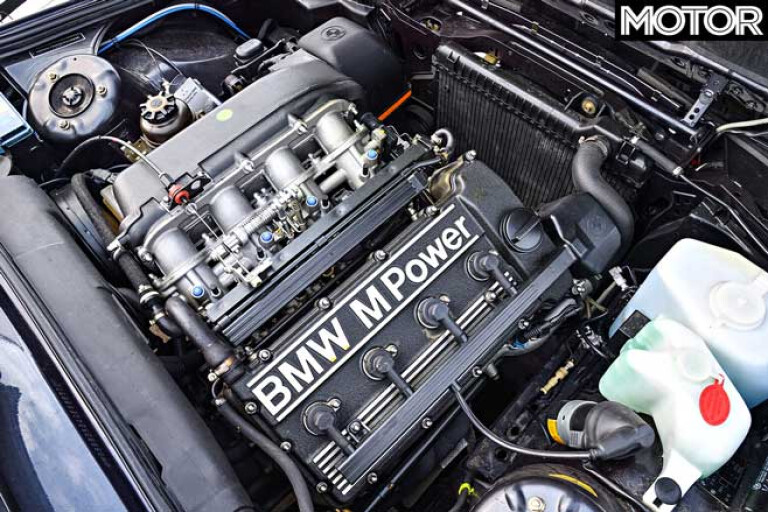
E36 (1992-1999)
S50: VANOS 3.0 atmo inline-6 debuts at 213kW. Extra 200cc in ‘95 lifts to 239kW.
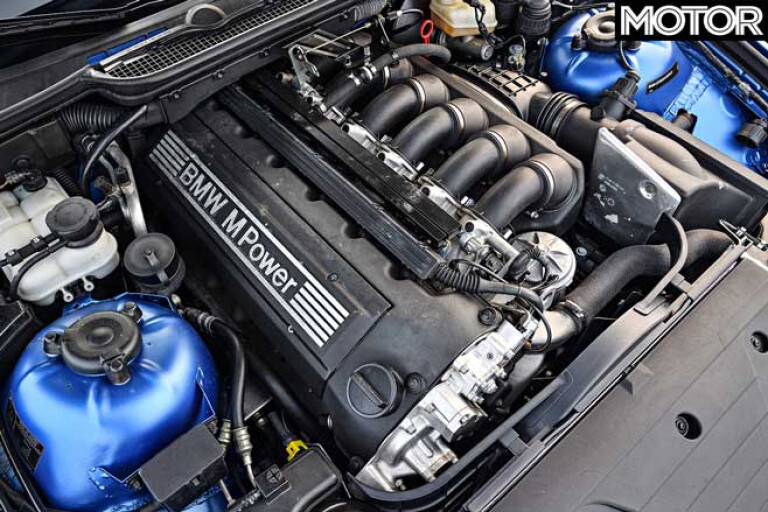
E46 (2000-2006)
S54: Further develops S50 to 252kW and 8000rpm. Makes 268kW in CSL trim.
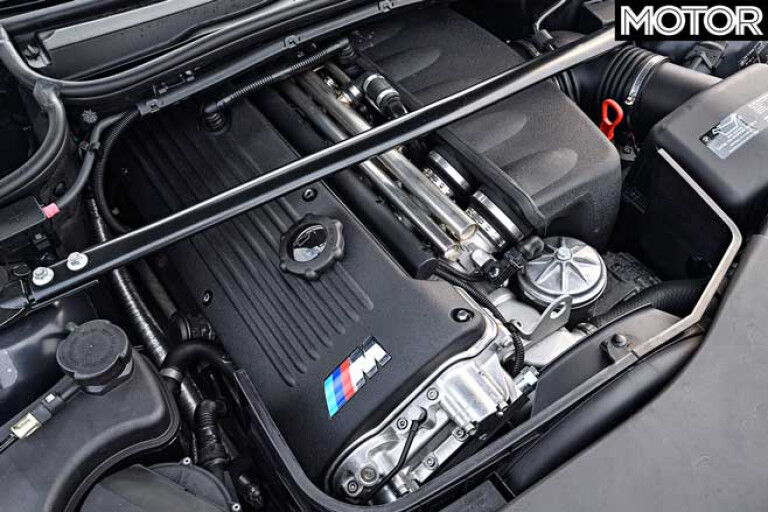
E92 (2007-2013)
S65: 4.0-litre atmo V8 hits 8250rpm, 309kW/400Nm. GTS edition gets 331kW.

F80 (2014-2019)
S55: New twin-turbo 3.0-litre inline-6 makes 331kW. And 550Nm at 1800rpm (!).
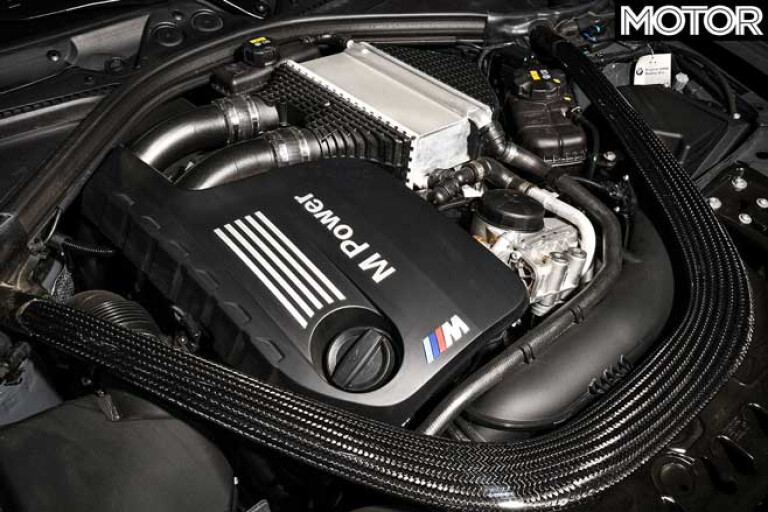
G80 (2019- )
S58: Monstrous twin-turbo 3.0-litre inline-6 makes 375kW/600Nm – for now!


COMMENTS